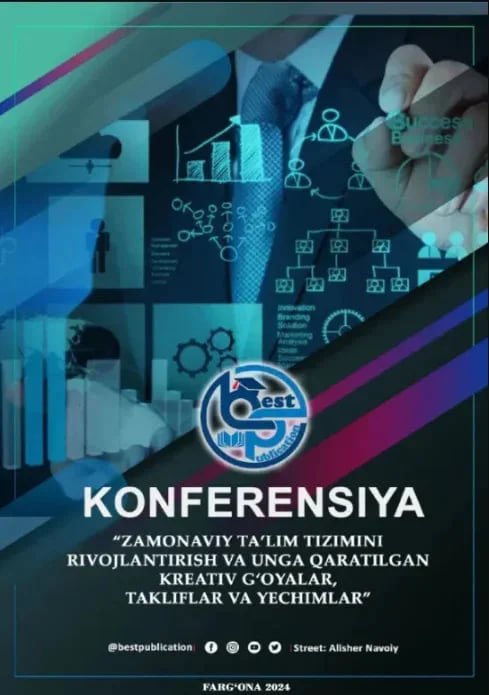SPECIFIC FEATURES OF SCI-FI TRANSLATIONS
Keywords:
Translation machine, translator, translation, neologism, sci-fi, alternative, style, termilnology, genre, fiction.Abstract
This article reveals the main features of translation in sci-fi and the works of scientists are analyzed and discussed, and there were mentioned the last innovations, many researches of styles and terminology in science fiction literatures’ translation and their contribution to the development of the language and translation.
References
1. Kapitonova, N. S., Sadovnikova, M. N., & Rudometova, A. Y. (2023). Artificial language nadsat in the russian, french and chinese languages. Sovremennye issledovaniya sotsialnykh problem. https://doi.org/10.12731/2077-1770-2023-15-4-63-73
2. ., .. & ., .. (NaN). - "". None. https://doi.org/None
3. Li, H. (2019). Subversive texts: illness and disability in chinese contemporary science fiction. None. https://doi.org/None
4. Vigna-Taglianti, J. (2024). Specific features in the translation of science fiction (as exemplified by the italian translation of a. and b. strugatskiis short story forgotten experiment). Litera. https://doi.org/10.25136/2409-8698.2024.12.72581
5. Shangzhen, L. (2021). An analysis of in-text thick translation strategies in the english translation of the three-body problem. Frontiers in Educational Research. https://doi.org/10.25236/FER.2021.040604
6. Matkivska, N. (2014). Audiovisual translation: conception, types, characters speech and translation strategies applied. Kaunas University of Technology. https://doi.org/10.5755/j01.sal.0.25.8516
7. Li, Z. (2021). From literature to imageaesthetic features of space megastructure cities in american sci-fi movies. International Journal of Languages Literature and Linguistics. https://doi.org/10.18178/ijlll.2021.7.3.297
8. Guo, T. (2023). Fan translation and film criticism in china. Translation and Interpreting Studies. https://doi.org/10.1075/tis.20093.guo
9. Falceri, G. (2017). Nancy huston in self-translation. an aesthetics of redoublement.. None. https://doi.org/None
10. Lai, K. K. & Chen, H. (2021). A comparative study on the effects of a vr and pc visual novel game on vocabulary learning. Computer Assisted Language Learning. https://doi.org/10.1080/09588221.2021.1928226
11. Graffigna, M. (2019). Living in a marxist sci-fi world: a phenomenological analysis of the power of science fiction. None. https://doi.org/None
12. Usmonova, Z. H. (2017). Stiven King romanlarining badiiy xususiyati va uning o’zbek ilmiy fantastikasiga ta’siri. Міжнародний науковий журнал Інтернаука, (1 (1)), 170-172.
13. Habibovna, U. Z. (2022). Truth and fairness in “the dead zone” by steven king’s. Open Access Repository, 8 (1), 77–80.
14. Usmonova, Z. H. (2017). The artistic character of Stephen King's novels and their influence on Uzbek science fiction. Míjnarodniynaukoviy magazine Ínternauka,(1 (1)), 170-172.
15. Usmonova, Z. (2022). СТИВЕН КИНГНИНГ “ЎЛИК МИНТАҚА”(“DEAD ZONE”) АСАРИДА «THE LAUGHING TIGER»(“СМЕЮЩИЙСЯ ТИГР”) ОБРАЗ ТАЛҚИНИ. ЦЕНТР НАУЧНЫХ ПУБЛИКАЦИЙ (buxdu. uz), 12(12).





